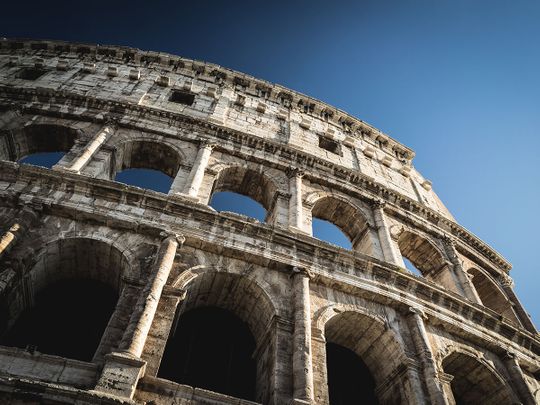
Beginning in the eighth century BC, the ancient Roman empire started as a small farming village on the banks of Italy’s Tiber River. Over the next few centuries, it grew into a mammoth empire that left its mark in every region it enveloped.
Click start to play today’s Crossword, where you can identify countries and empires that no longer exist.
At its peak, the Roman empire stretched across most of Europe and western Asia, along with North Africa and the Mediterranean islands. With its presence and influence came new languages, innovations and inventions. Here are just a few ways it impacted the world:
1. The aqueduct
Although they didn’t invent the idea of transporting water, the Romans went a step beyond the primitive canals and water systems in place, and used their engineering skills to build the aqueduct. The development brought clean water into towns and cities, and allowed for better hygiene and sanitation.
2. Roads
The phrase “all roads lead to Rome” exists in several languages, and there’s a good reason for it. The Romans developed a sophisticated network of roads and highways – it was crucial for managing such a vast empire. They built 88,513km of roads throughout Europe and the Mediterranean, which helped them move supplies, soldiers and communication around the region efficiently. The Romans were also some of the first people to introduce road signs and markers!
3. Public press
The Romans were pioneers in developing a way to distribute daily news to their citizens. Their handwritten announcements were publicly displayed in Rome, and covered politics, military updates, details about major stories or other developments. They also shared vital information about what was discussed in the senate, to keep the public apprised of court proceedings.
4. Postal service
With a rapidly growing empire, the Romans had to develop an efficient way to send and receive messages. Roman emperor Augustus came up with the idea of developing the first postal and courier service – the carriage service took messages from one official to another, across the entire empire.
5. Cement
From the Pantheon to the Colosseum and the Roman Forum, ancient Rome’s impressive structures are still standing in some shape or form, in numerous parts of the world. One of the reasons for their timeless durability is that they were built using a form of cement – an advanced construction material invented by the Romans. As a predecessor to the cement we use today, it was strong and resistant to wind or water, allowing the empire’s architecture to spread far and wide.
Have you visited sites from ancient Rome? Play today’s Crossword and tell us at games@gulfnews.com.









